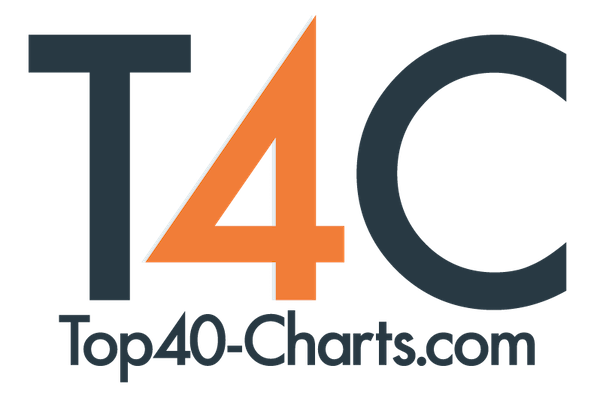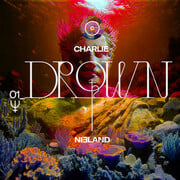New York, NY (Top40 Charts) In the past, music production was a team sport. Recording a song meant booking an expensive studio, hiring a producer, finding session musicians, and eventually handing off your mix to a mastering engineer. But today's indie artists are rewriting that script. With the help of AI tools and digital platforms, the modern creator can write, produce, and release professional-sounding tracks, all from a laptop.
This shift has opened the gates for a new wave of artists, often referred to as the "one-person band." Armed with software, they're crafting compelling soundscapes alone without sacrificing quality or creativity. Let's explore how technology is fueling this creative independence.
From Studios to Bedrooms: A Gear Shift in Production
Remember when entire buildings were dedicated to recording music? Now you can fit an entire studio into a backpack. The movement toward accessible music production began with the launch of digital audio workstations like Logic Pro and FL Studio. These platforms empowered artists to record, mix, and experiment at home, speeding up workflows and lowering costs.
But it didn't stop there. Smart technologies have taken things further. AI tools are filling in knowledge gaps and giving creators shortcuts without stifling their creative expression. Today's music producers don't need to be experts at every step; AI can guide the way.
Writing Songs with Smart Tools
Songwriting is where the magic starts, and AI is lending a hand here, too. Tools like an AI chord progression generator can offer instant inspiration by suggesting harmonies that fit various genres, especially pop-style tracks that rely on intricate chord movements. If you're stuck rewriting the same four chords, something like this AI chord progression generator can unlock new directions with just a few clicks.
These tools don't write the song for you, they give you a starting point. You still control the vibe, arrangement, and melody. In fact, many creators use AI to break writer's block or explore styles they wouldn't typically touch. AI also supports lyric generation and melody suggestions, helping songwriters fine-tune phrasing or try fresh hooks.
DIY Recording and Arranging
Once the song's outlined, it's time to build it out. This is where DAWs shine. Whether you're using Logic Pro, FL Studio, or recording directly through an online platform like BandLab, the essentials are within reach. You can record vocals, sequence drums, layer synths, and restructure arrangements in real time.
Having a BandLab account, for example, not only lets you access a virtual studio with instruments and mixing tools, but it also provides AI-driven features and cloud storage. Collaborations happen seamlessly, and your files stay safe across devices.
Virtual instruments and sample libraries have become refined, offering realistic simulations of drums, bass, strings, and brass sections. This means solo artists can craft a full-band sound without needing to hire live session players or rent equipment.
Mixing Made Manageable
A great performance can falter without a balanced mix. That's where mixing comes in, shaping each element so it sits well with the rest of the track in terms of volume, space, and frequency. While this used to be a mystical art handled by pros, AI has made it a more approachable process.
Modern plugins now offer intelligent assistance with EQ, compression, and reverb. Some even learn over time, adapting to your unique mixing style. Others let you compare your work to a reference track, helping you match its sonic characteristics like stereo width or dynamic range.
The larger idea here is that a clean mix builds the foundation for mastering, the final polish that prepares your song for streaming, downloads, or radio play.
AI Mastering: The Finishing Touch
Traditionally, mastering has been handled by seasoned engineers, and for good reason. Their job is about more than making a track louder. They enhance clarity, ensure consistency across albums or playlists, and maintain audio quality across different playback systems.
But now, platforms offering AI mastering are shaking things up. Services like Boombox's tool that allow creators to upload a final mix and receive a mastered version in minutes. These tools adjust pristine highs, sharpen the stereo field, and elevate the dynamic range without manual tweaking.
For many indie artists, AI mastering offers a blend of affordability and speed. The "unlimited masters" model is especially appealing, as it allows you to continuously tweak and improve your tracks without paying for each revision. While some still debate whether AI can capture the nuanced touch of a human mastering engineer, many listeners can't detect a difference.
Publishing and Getting Heard
Once your track is mastered, it's ready for the world. With digital distribution services like DistroKid, TuneCore, and even BandLab's direct publish options, you can upload your file and stream on Spotify, Apple Music, and beyond within days.
Social media also plays a pivotal role. TikTok and Instagram Reels are now launching careers, reshaping how music is discovered. Solo artists build communities around their sound, often bypassing traditional labels altogether. While this brings freedom, it also puts more responsibility on the creator to handle marketing, engagement, and branding.
What Listeners Actually Hear
Here's the thing, most listeners don't care whether a song was made in a million-dollar studio or on a kitchen laptop. What they do notice is how it sounds: Is the bass too loud? Are the vocals clear? Does the song feel energetic?
Whether they're using headphones or stereo speakers, listeners respond to balanced mixes and pristine highs. A solid AI mastering pass can help retain listener engagement, especially in crowded streaming environments where quality matters.
Analytics platforms now let you see how your audience reacts to that final product, giving insightful feedback on retention rates and drop-off points. For the one-person band, this data becomes a powerful tool in creating the next hit.
Limitations to Keep in Mind
While the current toolset is powerful, it's not foolproof. AI is just that, a tool. It can suggest a chord progression or EQ setting, but it can't replace your ears, taste, or creative instinct.
There's also the risk of homogeneity. Relying too much on the same AI recommendations could make everything sound similar. That's why combining your personal touch with AI precision is key.
And finally, make sure to tread carefully around intellectual property. Some AI tools train on existing works, creating murky legal territory when it comes to copyright ownership. Always read the fine print if you're using AI-generated material.
Looking Ahead: Where Creativity Meets Technology
Expect the future to bring even sharper AI tools, more intuitive interfaces, and deeper customization. Already, we're seeing AI get better at mimicking personal taste, offering creators more dynamic, nuanced options.
For the modern musician, less really is more. With a laptop, a BandLab account, and the right plugins, one person can take a song from idea to streaming-ready file. It's not just about doing it alone, it's about doing it well, on your terms.
The digital tools of today aren't replacing musicians. They're amplifying them. And in this new era, creative independence is no longer the exception, it's the standard.
Whether you're just starting out or ten tracks deep into your next album, tools like an AI chord progression generator and AI mastering can help transform what you hear in your head into what others hear in their headphones. The one-person band is here, and they're only getting louder.
























